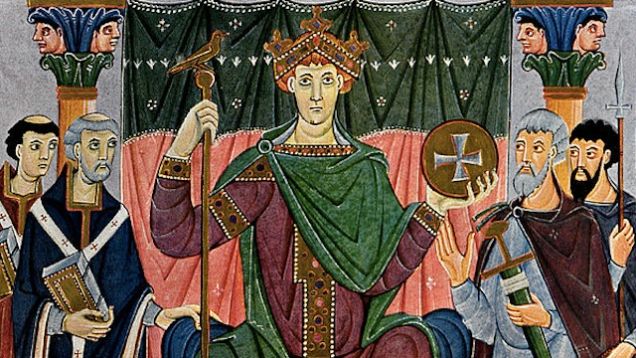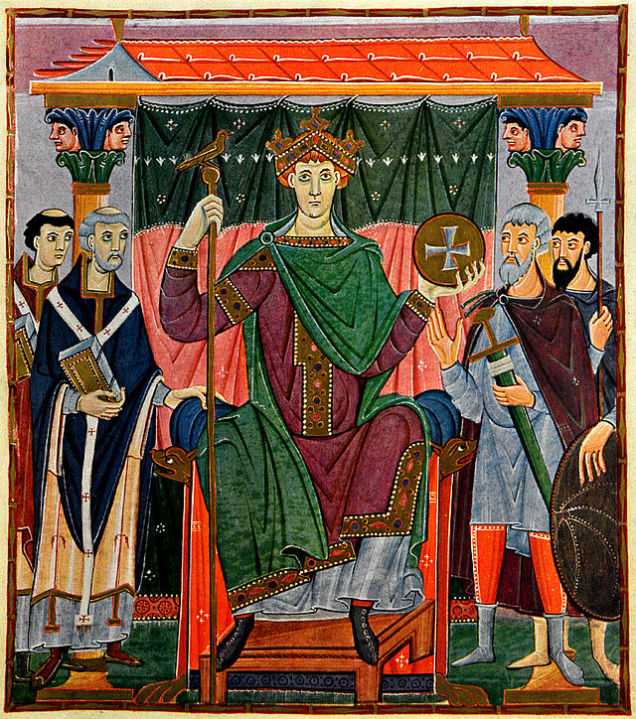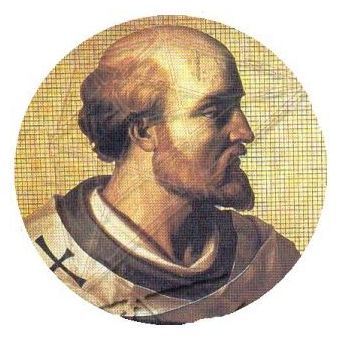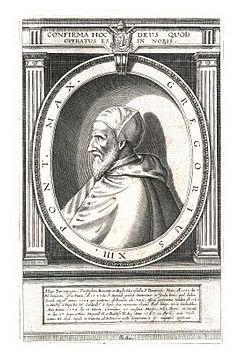
© io9
Pope Sylvester II and Holy Roman Emperor Otto III were two powerful men and two ambitious friends. Just how ambitious? There is a (
very controversial) theory that between them, they forcibly ushered in a new millennium... 300 years early.
Holy Roman Emperor Otto III was a man with a lot of power and a flair for self-aggrandizement. He had quite a bit to work with; the Holy Roman Empire was a huge amalgamation of what is now Germany, much of eastern Europe, northern Italy, and eastern France, and he was put in charge of it when he was three years old. He was crowned, famously, on Christmas day - the same day the original Holy Roman Emperor Charlemagne was crowned. (More on that later.)
Like another famous person whose reign was ushered in on Christmas day, Otto was threatened by a mad king, his uncle, who coveted his power. The young boy emerged unscathed after some military maneuvers, and was returned to his mother, a Byzantine princess. She brought him up with the idea that he would civilize the barbarous kingdom she had married into.
Otto III's main goal has been shared by many leaders throughout history: to usher in a new Rome. He funded scholars and artists and he sought to expand his kingdom. He also sought to cast himself, if not as a god or as the messiah, then as some kind of predestined savior. He wanted his reign to be portentous.

© io9
He was helped in this by his mentor, Gerbert of Aurillac. While Otto was born to the most powerful couple in the western world, Gerbert came from nowhere. His parents and the circumstances of his childhood are unknown, which means they were humble enough that no one cared to record them and Gerbert probably did not advertise them. The "of Aurillac" part of his name is known because, while quite young, he travelled to and entered the monastery of Aurillac. For much of the first and second millennia, the church was the only way for the relatively poor to ascend to wealth and power, and Gerbert took full advantage of it.

© io9
He traveled and studied, using Arabic numerals to make calculations in his head that, up until then, people had thought impossible. He put his knowledge to work, designing an organ that harmonized more perfectly than any other yet made. There is a legend that has Gerbert doing calculations that had never been done before by converting an entire church floor into an abacus. He had giant disks made, and recruited students to move them. He stood high up in the church, taking in the view and ordering his assistants to move the disks around as he made calculations.
Because the church was a way to worldly as well as spiritual power, the politics in the upper levels of the clerical hierarchy were savage. Gerbert was, over the years, threatened, imprisoned, stripped of his duties and his land, and had to flee to several powerful courts for protection. The last court he fled to was that of Otto III. Gerbert had tutored Otto's father, and when he arrived, he continued his work with the 17-year-old emperor. When Pope Gregory V died, Otto appointed Gerbert Pope. For his papal name, Gerbert took the name Sylvester, making him Sylvester II. Pope Sylvester I had been the adviser to Emperor Constantine of Rome. The year was 999, and the two were poised for a new millennium and a new empire.
The point is, both of these men knew how to self-mythologize, which is why Heribert Illig, a German systems analyst, believes that the two changed the date in order to make their ascent to power even more symbolic. It's possible that the two came to power at the middle, or end, of the sixth century AD, and simply rewrote the dates to make it look like they were on the brink of a new millennium.

© io9
Illig has a few interesting pieces of evidence to support him. There are allegations of widespread document fraud in several manuscripts written at the time, which seem to date from the seventh century. Byzantine documents from this era were transcribed from one kind of script to a new, more efficient script, and the originals were thrown away. Perhaps they were thrown away to conceal gaps and inconsistencies in the historical record.
The change-over from the Julian to the Gregorian calendar in 1582 was precipitated because all celebrations were about 10 days off from when they "should" be, seasonally-speaking. The gap of 10 days was far too short for a calendar system that had been accruing errors for 1500 years. Ten days only accounts for about 1200 years - leaving 300 years unaccounted for.
And then there's Charlemagne. Tall, strong, handsome, powerful, good, and the first Holy Roman Emperor. He was almost a King Arthur figure, a figure that was just secular enough to tie people together without displacing the religious authority of the pope. Of course he had some flaws. He was unable to learn to read, although he always wanted to. If only some learned Holy Roman Emperor could take up his mantle and improve on his reign, particularly if that man was crowned, like Charlemagne, on Christmas day.
It's worth noting that most historians vehemently disagree with this interpretation of events. Although the medieval period was turbulent, and most of the population did not have a good sense of the date, quietly adding 300 years to the timeline would have been too much of a stretch, even for the two most powerful and motivated men in Europe. That being said, it's an incredible idea, that two people invented three centuries, bending time to their will. And it makes our civilization quite advanced, considering we're living in the 1700s.
Sources:
Death of Emperor Otto III,
Gerbert of Aurillac,
Bogus Science
There might be some overlap from different perspectives. Further investigation...
The point is that the traditional time line more readily seems to rest on weak foundations. The Kool-Aid drinkers will howl that their anal sense of the universe is challenged.